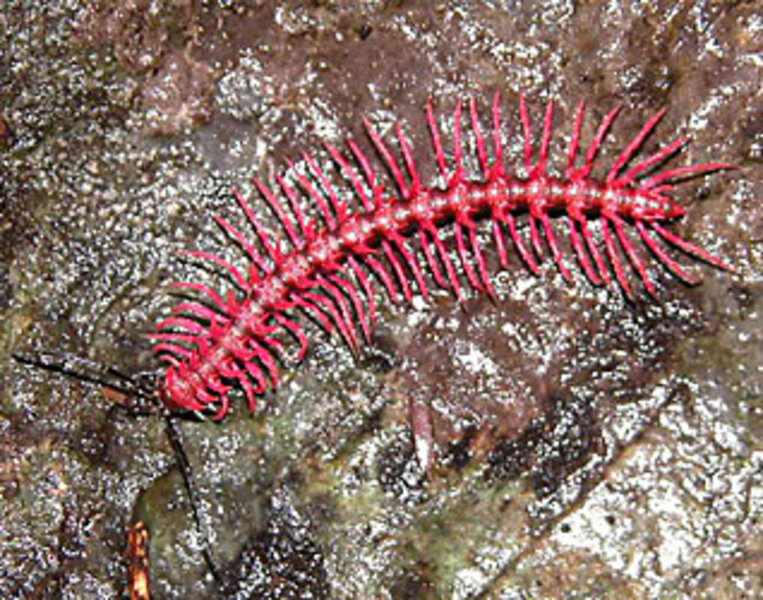Spectacular new species
Loading...
What do a pink millipede, an electric ray named after a vacuum cleaner, and a deadly snake have in common? All were new animal species discovered last year.
In May, the International Institute for Species Exploration (IISE) at Arizona State University reported that almost 17,000 new species of animals, plants, and microbes were discovered in 2007.
Biology professor Daphne Fautin was part of the international team of taxonomists – scientists who study and classify organisms – who helped assemble the list of new species. "People are amazed when they learn that so many animals and plants are discovered each year," said Dr. Fautin, by phone from her office at the University of Kansas.
Admittedly, she adds, many are tiny, nearly invisible bacteria and microbes that aren't exactly what the average person might call "exciting." So she helped the IISE produce a Top 10 list of the most interesting new species, hoping to raise awareness about the earth's fragile environment and the struggle of other species to survive.
"While we are finding many new species, a lot more are disappearing faster than we can discover them. Many are gone forever and we will never know that they ever existed," said Dr. Fautin.
Included on the list was an electric ray, discovered off the coast of South Africa. Partly because the animal's feeding technique involves vigorously sucking food off the ocean floor, it was named Electrolux addisoni, after the well-known brand of Electrolux vacuum cleaners.
New species were also found in Australia, a country renowned for its unusual and often venomous animals. A single specimen of the central ranges taipan, a snake, was discovered crossing a dirt track in the scorching-hot, central desert region. After being bagged, it was sent to the Western Australian Museum where it was identified as a new species. This toxic Aussie reptile is related to the Fierce Snake (also known as the inland taipan), which is the world's most venomous snake.
Of all the new species discovered last year, an inch-long, electric-pink millipede is one of the most eye-popping. It was observed by Henrik Enghoff and colleagues in a limestone cavern in Thailand.
"I'm sure local people knew the pink millipede already, although we were the first scientists to see it," said Dr. Enghoff by e-mail from his office at the University of Copenhagen, in Denmark. In the bug world, "pink is uncommon but not unheard of among insects and their relatives."
The bright color of the pink millipede is to warn predators to back off because it has "defensive glands that produce hydrogen cyanide," which is a poison, said Dr. Enghoff. Even if a predator was colorblind, as some animals are, it "would be discouraged by the spines and also the unpleasant smell given off by the millipede when disturbed," he added.
At first glance, the pink millipede may look like a centipede. But it is indeed a millipede and belongs to a group known as Polydesmida, which have flattened bodies rather than round ones as most millipedes do.
"All millipedes also have two pairs of legs per body segment; centipedes have one pair. Centipedes have poison fangs under their head; millipedes don't," said Dr. Enghoff.
What's neat about discovering new species, according to Dr. Fautin, is that it doesn't always require expensive technology, as a lot of science work does. Many new species have been discovered by amateurs such as bird-watchers, shell collectors, and other people with an intense interest in nature.
"Just go out in the field and look!" she said. But, she added, "It does take a long time for a person to develop a knowledge of plants and animals in order to be able to recognize something new."





